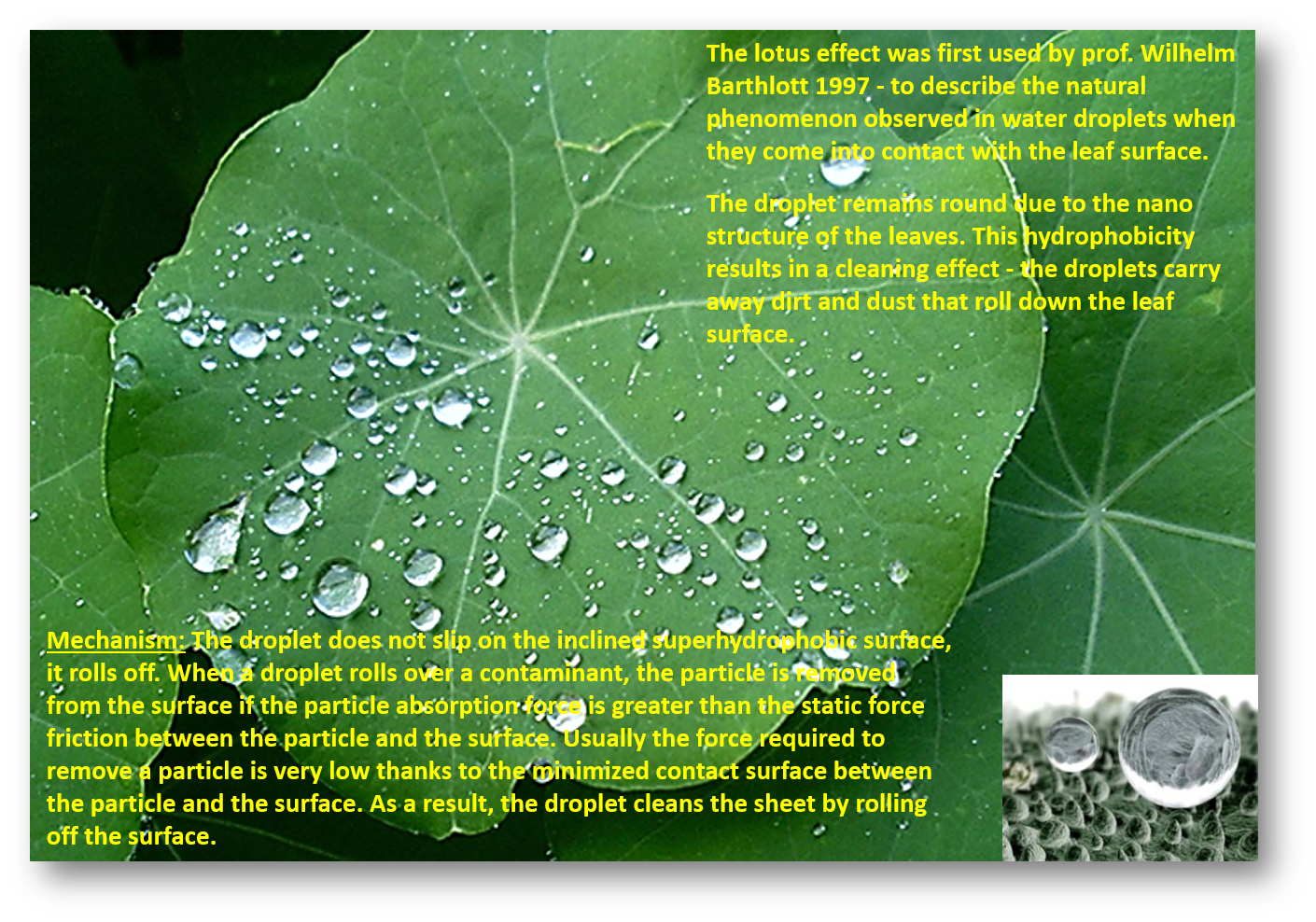3. Functionalization of textiles using nanotechnology
3.2. Biomimetics - applications in textile
Bioinspired design has also inspired the scientist in investigation of water-repellent materials.
It well known how duck feathers consist of multiscale structures having preening oil to repel water. In this case the microstructure of duck feathers was simulated by coating cotton and polyester textiles with chitosan using a surface solution precipitation method followed by modification with a silicone compound to achieve a low surface energy. Surface of polyester fibers after treatment with chitosan have visible nanosized roughness, while the chitosan-treated polyester textiles provided flexibility and water repellence.
Lotus leaf nanostructures also inspired biomimetic studies for application in textiles.
Cotton fibers were coated with pristine and surface modified carbon nanotubes (CNTs) to mimic the nanostructure of lotus leaves. The resulting cotton fabrics had contact angles greater than 150°.
Another study that was inspired with lotus leaves nanocoating (20 nm) to create hydrophobic textiles is consisted of epoxy-containing poly(glycidyl methacrylate) (PGMA) and SiO2 NPs for the initial surface modification and generation of the primary reactive layer. Polymers with different functional groups (e.g., carboxy, anhydride, amino, and hydroxyl) could be grafted on the reactive layer.
Photocatalytic self-cleaning fabrics
Photocatalytic
process is the acceleration of photoreaction in the presence of catalyst. This
process will decompose the dirt molecules by utilize the sunlight. The
semiconductor photocatalytic process has shown a great potential as a low-cost,
environmental friendly and sustainable treatment technology. Those
semiconductor materials also have been used to functionalize onto the different
textiles for self-cleaning properties. Another
semiconductor material, which appears to be an alternative to TiO2 is
zinc oxide (ZnO).

Photocatalytic
self-cleaning fabrics are able to clean themselves when exposed to light, but
they also possess antibacterial and UV blocking functions
Source: doi:10.1088/1757-899X/133/1/012028


